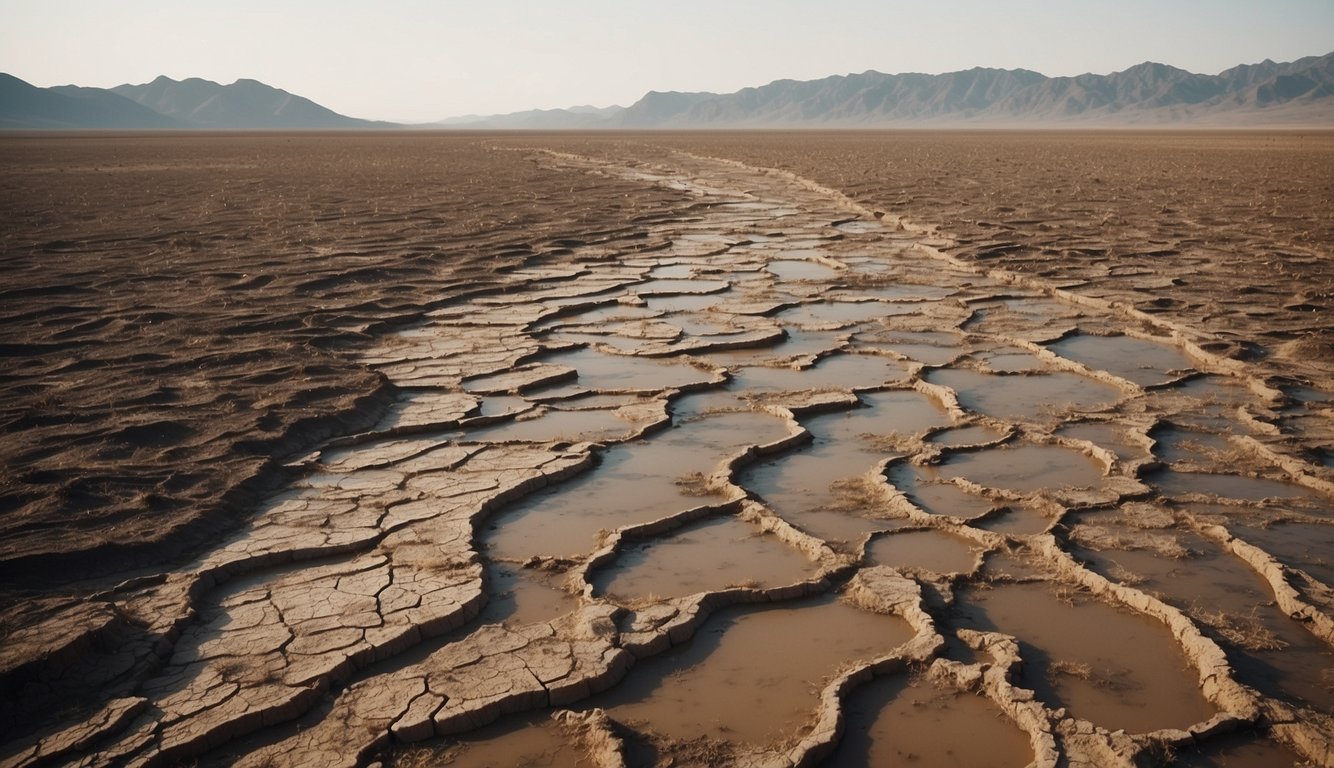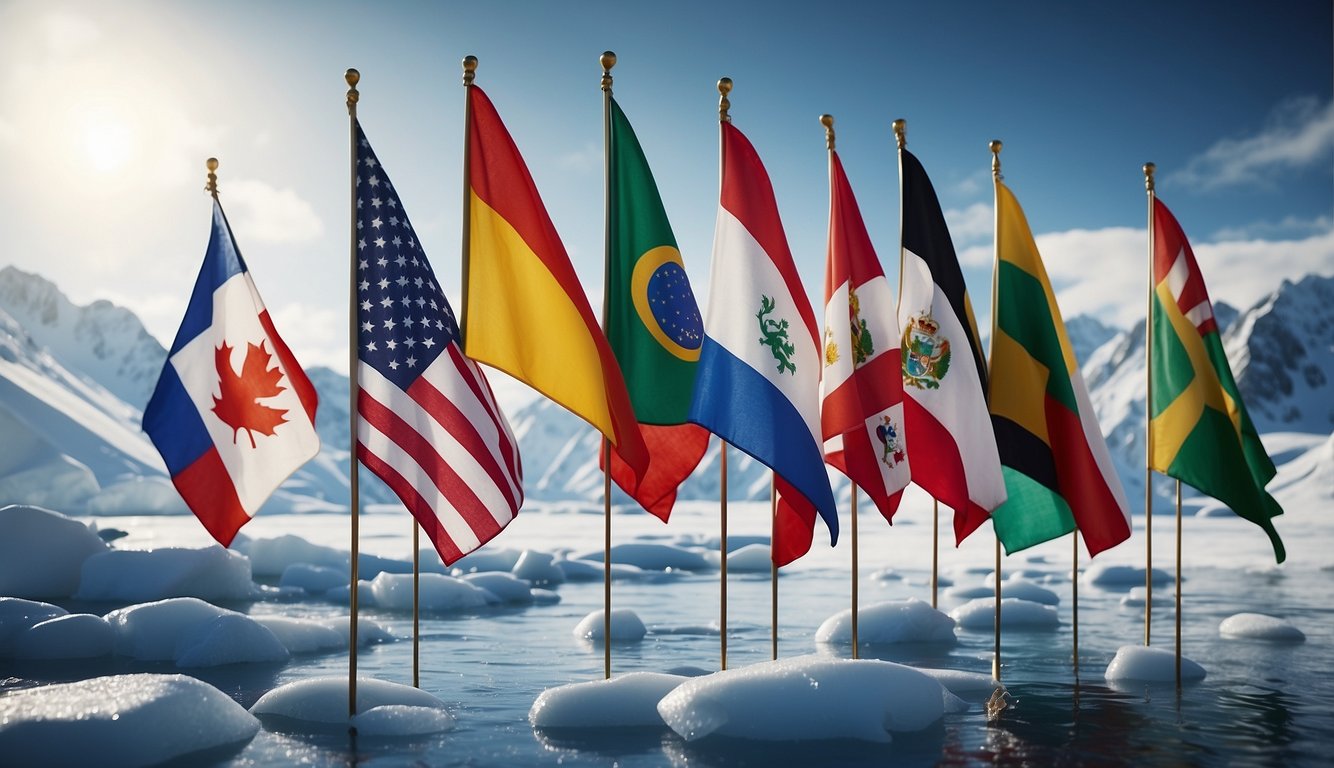
Adapting to a Warmer, More Volatile World
Climate change is not a distant threat; it actively shapes the world you live in today. As the planet warms, due to increased greenhouse gas emissions, this leads to a variety of environmental changes with critical implications for ecosystems and human societies alike. Specific challenges include shifts in temperature ranges, which impact species’ survival and contribute to biodiversity loss, altered ecosystem structures, and increased frequency of extreme weather events. These changes prompt a need for adaptive strategies to ensure the continuity of life and livelihoods.
Your health, the health of the ecosystems you rely on, and even the stability of food production are affected. In turn, this creates an impetus for societies to develop survival strategies that are responsive to these changing conditions. To mitigate the threats posed by climate change, it is crucial to understand its impacts on natural and human systems and to employ a range of strategies, from improving early warning systems for climatic disasters to implementing policies that promote international cooperation and sustainable economic development. Harnessing the latest innovations and a global commitment to adapting to these challenges is becoming increasingly important.
Key Takeaways
- Climate change necessitates the development of adaptive strategies for human and ecological survival.
- Health, food security, and ecosystem stability are being compromised, highlighting the urgent need for mitigation measures.
- Building resilience to climate change involves international cooperation, economic strategies, and embracing innovations.
Understanding Climate Change
Climate change encompasses a range of environmental alterations, notably shifts in Earth’s average temperatures and weather patterns over time. Recognizing the core concepts of climate change and the role of greenhouse gases are crucial steps in grasping its wider implications on survival strategies.
Concept of Climate Change and Global Warming
Climate change refers to long-term changes in temperature and typical weather patterns in a place. Global warming is a more specific term denoting the recent trend of a steady increase in Earth’s average surface temperature. This trend is due to the rise in carbon dioxide (CO₂) and other greenhouse gases in our atmosphere.
- Evidence of change: You can see indicators of climate change in the melting of ice caps, rising sea levels, and increasing incidences of extreme weather events.
- Temperature records: Over the past century, the average surface temperature has risen by approximately 1 degree Celsius, which might seem small but has significant long-term impacts.
Role of Greenhouse Gases
Greenhouse gases, including CO₂, methane, and nitrous oxide, are vital for life on Earth because they trap heat in the atmosphere. However, human activities, such as burning fossil fuels and deforestation, have increased their concentration, leading to an enhanced greenhouse effect.
- Engines of warming: These gases allow sunlight to enter the atmosphere freely. When Earth’s surface absorbs sunlight, it radiates it back toward space as infrared heat. Greenhouse gases absorb this heat, warming the atmosphere.
- Carbon dioxide levels: The concentration of CO₂, the most significant greenhouse gas, has surged past 400 parts per million, a level not seen in millions of years.
Biological Impacts of Climate Change
Climate change is reshaping the survival strategies of species and ecosystems. As you read on, you’ll discover specific ways in which rising temperatures and environmental shifts are affecting biodiversity and habitats.
Effects on Species and Ecosystems
Species Adaptation: Climate change alters conditions that species have adapted to over millennia. This leads to shifts in behavioral patterns, migratory routes, and reproductive cycles. For instance, you may notice birds changing their migration timing to coincide with earlier springs. Some species may even evolve more rapidly to cope with changing conditions, a phenomenon known as contemporary evolution.
- Phenology Changes: Many species alter their life-cycle events like flowering or breeding in response to climate cues.
- Range Shifts: Species are moving their geographical ranges to maintain optimum living conditions, with some moving closer to the poles or to higher altitudes.
- Desynchronization: Interdependent species, such as pollinators and flowering plants, may become out of sync, jeopardizing their survival.
Ecosystem Dynamics: The interaction between different species within ecosystems is intricate and balanced. Climate change disrupts these dynamics, often leading to:
- Altered Food Webs: Disruption in predator-prey relationships due to mismatched breeding times or migration shifts.
- Ocean Acidification: A decrease in pH levels in the ocean disrupts marine ecosystems, affecting coral reefs and the species that depend on them.
- Increased Pollution: Warmer temperatures can exacerbate the effects of pollution, resulting in more harmful environments for species.
Biodiversity Loss and Habitat Alteration
Biodiversity Loss: As climate change progresses, the loss of biodiversity is a pressing concern. It not only refers to the extinction of species but also includes the loss of genetic diversity and unique ecosystem functions.
- Extinction Rates: Predictions suggest that extinction rates may rise, especially for those species that cannot adapt or relocate.
- Genetic Variation: Reduced genetic diversity can affect a species’ ability to adapt to future environmental changes.
Habitat Loss:
- Deforestation: In response to climate pressures, human activities like deforestation further exacerbate habitat loss.
- Melting Ice: Polar ecosystems face habitat reduction due to melting ice caps.
- Sea-Level Rise: Coastal habitats are being submerged, leading to a decline in coastal biodiversity and the loss of breeding grounds for many species.
Climate Events: Extreme climate events, such as droughts or floods, can destroy habitats and thus rapidly reduce biodiversity.
By understanding these impacts, you can appreciate the complex challenges that biodiversity and ecosystems face in a changing climate.
Societal Challenges

Climate change is reshaping the way you live, with immediate threats to your routine survival strategies. The severity and frequency of extreme weather events have increased, directly affecting agriculture and food security.
Vulnerability to Extreme Weather
Your vulnerability to extreme weather is heightened due to climate change. Droughts and floods are becoming more frequent and severe, leading to disruptions in utilities, damage to infrastructure, and a heightened risk of food and water shortages. For instance, a single drought can significantly reduce water availability, affecting both personal consumption and agricultural use.
Impact on Agriculture and Food Security
The stability of your food supply is at risk due to the changing climate. Agriculture, a cornerstone of food security, is profoundly affected by unpredictable weather patterns. Extreme weather can lead to crop failures, reducing yields and increasing the risk of food shortages. Here are some specific ways climate change is disrupting agriculture:
- Droughts: Lead to reduced water availability for irrigation, affecting crop health and yields.
- Floods: Can destroy crops, deplete soil nutrients, and cause soil erosion.
Adaptive Responses to Climate Change

As the world grapples with climate change, your survival hinges on embracing adaptive strategies. These responses ensure the continued availability of resources while maintaining ecological balance.
Innovation in Agriculture
Technology Integration: You can increase crop resilience through the use of drought-resistant seeds and precision farming techniques, leveraging data to optimize water use and reduce waste.
- Drought-Resistant Varieties: Cultivating crops with enhanced tolerance to climate stressors ensures food security.
- Water Management: Implementing smart irrigation systems conserves water and increases efficiency in resource usage.
Practice Shifts: Crop diversification and modified planting schedules align agricultural practices with changing climatic conditions—ensuring you can maintain productivity and sustainability.
Preservation and Restoration of Ecosystems
Forest Management: Forests are vital carbon sinks. Employing strategies like reforestation and managed forestry maintains these carbon sinks while also preserving biodiversity.
- Mangroves and Wetlands: These ecosystems serve as natural barriers against extreme weather. Protecting and restoring mangroves and wetlands enhances resilience to sea-level rise and storm surges.
Engineering Solutions: Building and updating dams and other water retention structures protect inland areas from flooding, regulate water flow, and contribute to stabilizing local ecosystems.
- Dams: Ensure dam infrastructures are adaptable to fluctuating water levels, mitigating the risk of water scarcity or flooding.
- Carbon Sequestration: Wetlands, aside from their protective role, act as significant carbon sinks. Restoring wetlands increases carbon sequestration, helping you to curb greenhouse gas emissions.
Implementing these adaptive responses to climate change enables you to navigate the challenges ahead with greater assurance of resource availability and ecological integrity.
Climatic Phenomena and Disasters

As we examine the impact of climate change, understanding the direct links between extreme weather events and survival strategies is essential. You’ll see how heightened climatic phenomena lead to natural disasters and disease spread, compelling changes in how societies prepare for and respond to these challenges.
Managing Weather Extremes and Natural Disasters
Extreme Weather Events: Climate change is contributing to increases in the frequency and severity of extreme weather events like storms and wildfires. Your survival strategies must adapt to handle these intense scenarios.
- Storms: Prepare for stronger hurricanes with higher wind speeds, heavier rainfall, and extended duration. You will need to focus on robust emergency plans and improved infrastructure.
- Wildfires: Anticipate more frequent and severe wildfires demanding rigorous fire prevention strategies, including landscape management and community education.
Climate Change and Disease Spread
Climate Change and Disease Spread: Warmer global temperatures can alter the habitat ranges of disease vectors, making diseases like malaria and dengue fever more common in areas where they were previously controlled or non-existent.
- Vector-borne Diseases: Mosquitoes and ticks thrive in warmer climates, and so the diseases they carry. Your health systems should be prepared for an increase in vector-borne diseases, requiring enhanced surveillance and preventative measures.
International Cooperation and Policies

International cooperation is crucial in combating climate change, with entities like the UN fostering agreements that serve as milestones for collective action. Your understanding of these frameworks can enhance your perspective on the complexity and necessity of global policy-making in addressing environmental challenges.
Role of UN and the Paris Agreement
The United Nations (UN) plays a pivotal role in orchestrating international efforts to mitigate the impacts of climate change. Central to this is the Paris Agreement, established in 2015, which aims to limit global warming to well below 2 degrees Celsius above pre-industrial levels, and to pursue efforts to limit the temperature increase even further to 1.5 degrees Celsius. A key component of the Paris Agreement is the Nationally Determined Contributions (NDCs), where each country outlines their own targets for reducing greenhouse gas emissions. You are part of this global collaboration through your government’s commitment to these NDCs.
- Key points about the Paris Agreement:
- Objective: Reduce global warming to below 2°C, preferably to 1.5°C.
- Mechanism: Nationally determined contributions (NDCs).
- Participation: Almost every country has joined.
Intergovernmental Panel on Climate Change Actions
The Intergovernmental Panel on Climate Change (IPCC) acts as an authoritative body on climate change, providing scientific information to inform and shape international policy. The IPCC doesn’t implement policies; instead, it supplies crucial assessments that guide governments in crafting strategies that reflect the urgency and scale of climate action required. As a global citizen, your awareness and support of these actions contribute to their effectiveness.
- Recent Contributions by IPCC:
- Assessment reports with latest scientific findings.
- Guidance on the development of technologies to reduce emissions.
Economic Implications and Strategies

Your understanding of the economic implications of climate change and the development of viable strategies are crucial for sustaining future growth and stability.
The Economic Cost of Climate Change
Climate change is not just an environmental issue, but a complex economic challenge affecting various sectors. The World Bank has highlighted the need for strategic investments to mitigate economic impacts, such as losses in global food security. Rising temperatures and unpredictable weather patterns can lead to decreased agricultural productivity, which in turn affects food supply and prices, impacting your economic well-being. The integration of climate risks into financial planning is essential.
- Impact on Agriculture: Shifts in temperature and rainfall patterns disrupt crop yields.
- Healthcare Burden: Increased prevalence of diseases and climate-related health issues could lead to economic strains on healthcare systems.
- Infrastructure: Extreme weather events necessitate robust infrastructure investments.
Sustainable Development and Financial Investments
Sustainable development is key to reducing the economic impacts of climate change. Your investment in renewable energy and sustainable practices is not only good for the planet but also for the economy, opening up new job markets and industries. The emphasis on sustainability by financial institutions aligns with long-term economic stability and growth.
- Renewable Energy: Embracing renewable sources reduces dependency on fossil fuels and contributes to economic diversification.
- Sustainable Practices: By adopting sustainable agricultural practices, you help ensure food security and economic resilience.
- Green Financing: Engaging with financial products that support environmental sustainability, like green bonds or funds, allows for the channeling of capital towards sustainable projects.
Future Outlooks and Innovations
Your understanding of future outlooks and innovations will be crucial as you navigate the shifting landscape of climate change. Integrating mitigation strategies with technological advancements and evolving global climate policies provides a pathway towards a more sustainable and resilient future.
Mitigation Strategies and Technological Advancements
Mitigation strategies are essential in your response to climate change, aiming to reduce the output of greenhouse gases and stabilize global temperatures. Technology plays a pivotal role here. You can look towards innovations such as carbon capture and storage (CCS) which involve trapping carbon dioxide at its emission source and storing it underground to prevent its entry into the atmosphere. Renewable energy technologies like solar, wind, and hydroelectric power are imperative in replacing fossil-fuel-based energy sources, thus reducing carbon footprints.
To foster resilience, vulnerability assessments become a tool at your disposal, allowing you to identify the potential impacts of climate change. These assessments guide the design and implementation of robust mitigation strategies, ensuring that you can withstand and adapt to climate-related stresses and shocks.
Energy Efficiency: Accelerating improvements in energy efficiency, especially in building and transport sectors.
Sustainable Practices: Encouraging sustainable land-use practices that enhance soil carbon sequestration.
Innovation Investment: Increasing investment in new technologies that can decarbonize industrial processes.
Evolution of Global Climate Policies
International cooperation through global climate policies is key to your efforts against climate change. You must recognize the role of organizations such as the World Meteorological Organization, which contribute to global climate strategies by providing scientific information and guidelines.
Global policy frameworks, such as the Paris Agreement, set international targets and encourage nations to formulate and heighten their Nationally Determined Contributions (NDCs), which are plans to reduce national emissions and adapt to the impacts of climate change. You have the responsibility to stay informed and involved in the development of these policies, ensuring they are ambitious, transparent, and equitable.
International Agreements: Understanding and compliance with multicountry agreements and commitments.
Local Action: Translating global objectives into local action, aligning national policies with global sustainability goals.
Public Engagement: Enhancing public engagement and education to build a societal consensus on climate action.
By integrating innovative technologies with sound policy, your actions contribute to a potent global response against climate change. These strategies not only mitigate the effects of climate change but also empower you to pave the way for a sustainable and resilient future.
Frequently Asked Questions
Climate change is altering how you interact with the environment and necessitates the development of new survival strategies both for humans and wildlife. These FAQs provide insights into the direct implications for resource availability, species adaptation, public health, agriculture, community initiatives, and infrastructure.
How does climate change influence the availability of resources necessary for human survival?
Climate change affects water supplies and diminishes arable land, impacting your access to clean water and food. Droughts, heatwaves, and unpredictable rainfall patterns also compromise the reliability of hydroelectric power, influencing energy access.
What adaptations are species developing in response to climate change?
Species are adjusting migration patterns, breeding seasons, and physical characteristics. For example, some are developing longer limbs to dissipate heat more effectively, while others are shifting to higher altitudes where temperatures are cooler.
In what ways does climate change pose a threat to public health?
Climate change exacerbates illnesses like heart disease and asthma due to increased air pollution and allergens. The spread of vector-borne diseases is also expanding, as warmer climates allow pests like mosquitoes to thrive in new regions, placing your health at risk.
How are agricultural practices adapting to cope with the changing climate?
Farmers are turning to drought-resistant crop varieties, altering planting schedules, and employing advanced irrigation systems to conserve water. These modifications aim to maintain crop yields in the face of changing weather patterns.
What are effective community-level strategies for mitigating climate change impacts?
Communities are implementing green infrastructure projects, such as planting trees and restoring wetlands, to improve resilience. Investing in renewable energy sources and promoting energy efficiency programs also play significant roles in mitigation.
How does the increase in extreme weather events affect infrastructure and human safety?
The rise in frequency and severity of extreme weather events jeopardizes infrastructure integrity, leading to power outages and transportation disruptions. To safeguard human safety, communities are strengthening building codes and improving emergency response systems.

Leave a Reply